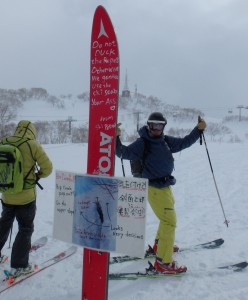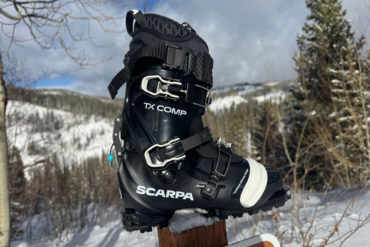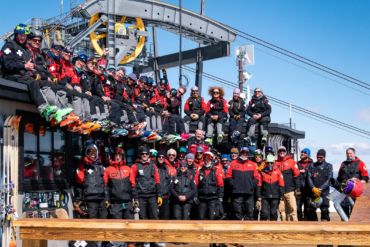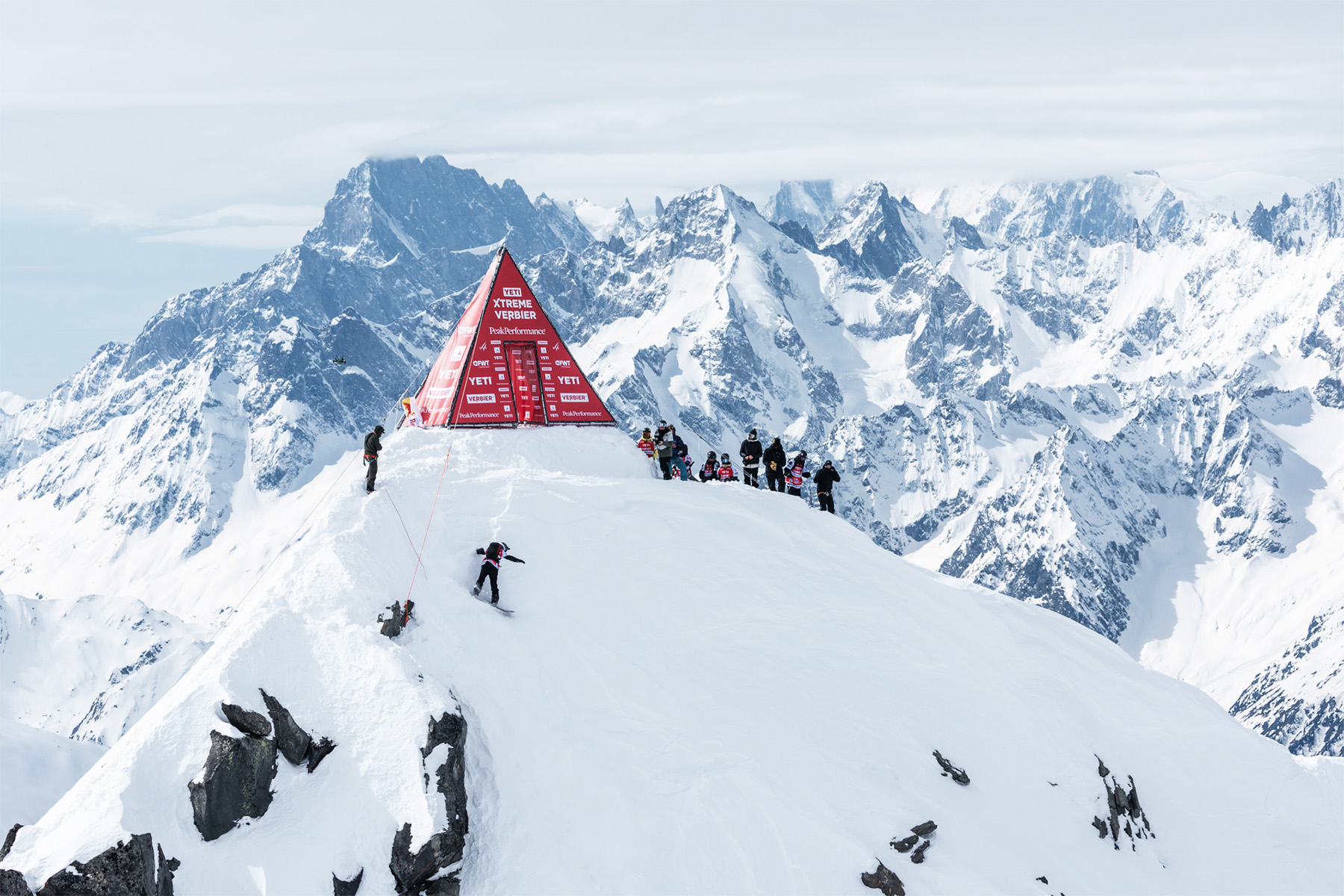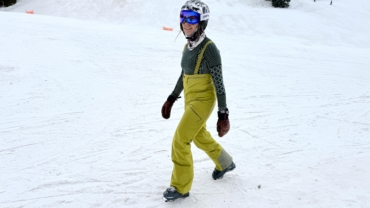[leadin]Dreaming of the deepest, softest powder a skier or snowboarder can imagine? Of course you are. And Japan has it. The magical powder stories you’ve heard are true and here’s what you should know before you go.[/leadin]

I recently returned from a week of skiing and apparel testing with Columbia Sportswear. The experience was one for the bucket list, and something any serious skier or boarder will want to strive for at least once in their lives. While the adventure went smoothly, I learned a few things I’d love to share with others who might make this trip. This is certainly not all-inclusive, but hopefully can make the planning a little easier.
Japan – 14 Tips For Skiers
1. Consider Hiring A Guide For A Day
Japan’s ski resorts are harder to navigate than those in North America, with few signs and a gate system that, while sensible, can take a little getting used to. We followed a guide on one trek from the summit of Niseko for a solid hour of flat cruising to get back to the base area. A day with a guide will help you learn the ropes of the Japanese resort while helping you score untracked powder on day one.

Be sure to vet your guide, ensuring that they carry liability insurance and knowledge of the mountains you’d like to ski. Our guides at NOASC had led skiers in the area for more than 20 years, knew the mountains well, and were a valuable resource for logistical planning, going so far as to meet us at the airport in Sapporo, a three-hour drive from their home.
2. Enlist Local Knowledge

This is obviously related to number one, but can also be helpful in planning. When contacting guide services long before your trip, ask them for help in booking rooms and lift tickets. While some Japanese do speak English well, especially in touristy towns like Niseko, some smaller resorts, hotels, and restaurants can be hard to find and book without help.
3. Carry Cash
Japan is a cash country. While you can pay with a credit card at some restaurants and stores, many places just don’t take credit cards, and ATM’s can be hard to find. Make sure to get cash for your trip. You can withdraw Yen from ATM’s at the airport in Sapporo, or from many convenience stores.
4. Don’t Plan To Drive
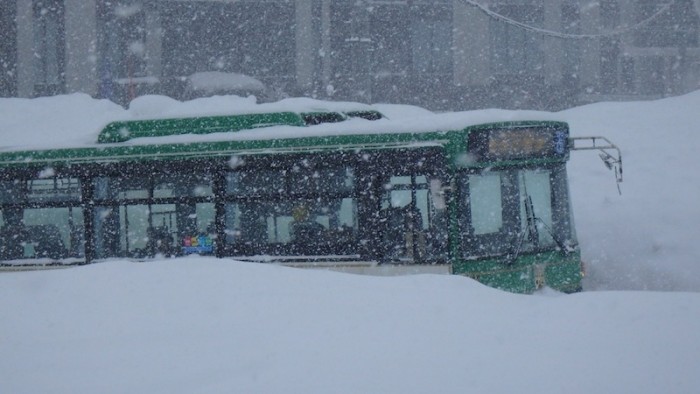
You can’t rent a car in Japan unless you have an international drivers license. So don’t plan to show up and rent a car from the airport. In Hokkaido, bus travel is the way to go, but because they are popular they can be busy, book them early, online.
5. Powder Skiing Hokkaido
While there are a few regions with good skiing in Japan, my experience was to the northern snow-paradise of Hokkaido. Hokkaido is home to arguably the world’s powder capitol, Niseko, as well as highly regarded resorts like Rusutsu and Furano. To fly here internationally, fly to the Sapporo airport. You will most likely have a connection in Tokyo (the direct United flight from Denver is wonderful) or at another large international airport.

It’s worth noting that Niseko comprises four unique resorts: Grand Hirafu, Niseko Village, Niseko Annupuri, and Niseko Hanazono. The resorts are all interconnected through gates, and can all be ridden on a single lift ticket from Niseko United.
Rusutsu is a fun stand-alone mountain. We hit it for one day with great snow, and found the steep trees to be a blast. You will find a lot of double fall lines here, as most of the runs drop into valleys before trickling back to lifts. Still, it’s a great, low-key mountain with a much more local vibe than Niseko.
6. Hit The ‘Hot Box’
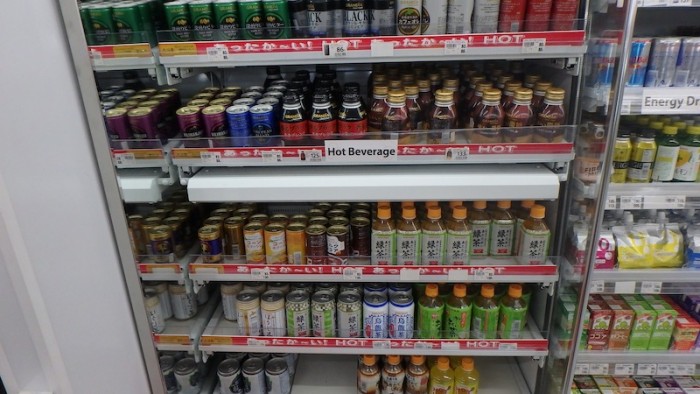
If you don’t function without your daily Java, you will quickly decipher any new country’s coffee situation. In Japan, just find the nearest convenience store (or vending machine!), and grab a can from the shelves labeled “hot” (or just feel around). These cans are indeed hot, and they contain pretty good coffee. With some luck and experimentation, you will figure out which cans are sweetened, black, creamed, and so-forth. Enjoy the uncertainty!
7. Dress For A Blizzard
During my week in Hokkaido, it snowed more than four feet on the mountain at Niseko. Snow was a constant, which is awesome so long as you are prepared.

We were there to test Columbia’s latest OutDry Extreme insulated line of ski gear, and it performed amazingly, keeping me dry and warm for day after day of deep powder skiing. For those with less-than-awesome apparel, be sure to bring an extra pair of gloves, goggles, and base layers in case things don’t completely dry overnight.
8. Leave Your Modesty At Home
Hokkaido is speckled with wonderful hot springs called Onsens. But be forewarned: These are not clothing optional; they are clothing prohibited. Yep, check your modesty at the customs exchange, if you get in the hot springs (and you should) you’re getting naked. Be sure to use the provided stools and shower facilities to give yourself a very good scrubbing before entering the Onsen.
9. Expect Insane Amounts Of Snow
I could not believe the amount of snow that falls in Hokkaido. Of course, it has its dry days, but our guide from NOASC said the longest dry spell he’d seen in 20 years lasted just a week.

All this snow is, of course, awesome for skiing, but can lead to a few dangers. First, bring an avalanche beacon, shovel, and probe. Some areas within resort boundaries require you to check your beacon at the gate. No beacon, no pow!
Another danger from the huge snowfall coupled with underlying bamboo is known as a “creep crack.” Basically, the super-deep snowpack can slump downhill a bit at convex rollovers, causing a very deep (15-foot+) crack to form in the snow. People have fallen into these cracks and died!
Cracks are generally marked, and areas that have cracks carry some (bizarre) warnings, but it’s good to keep your eyes open nonetheless.
10. Bring Fat Skis (Or Rent Them)
Wondering which skis to bring to Japan? The fattest ones in your quiver. Of course, you can ski pretty much anything, as the snow, while light, is reasonably supportive. But still, fat skis are great on deep snow, and it almost certainly will be deep and soft.
Note that rental equipment is not only available at many resorts, but often of high quality. There are some good options, so if you don’t own good powder skis, renting is a viable option.
A note on touring: There is some great backcountry touring in the area, so if you like to earn your turns, consider a setup with touring bindings and boots, especially if you are happy riding the same gear inbounds. You will want a guide to tour safely, but for super deep untracked snow, a backcountry tour is hard to beat.
11. Skis Might Have To Ride Inside (And Wear A Sock)

Somehow, even with all the fat skis on the mountains, many of the gondolas we rode at Niseko and Rusutsu couldn’t hold the fatter ones on the outside. The gondolas are small inside, so get ready for a cozy ride with your skis, covered by a board cover to not scratch the windows.
12. USA, Australia, Europe To Japan Power Adapters
Lucky for you, American traveler; your devices will generally work in Japanese outlets if they don’t have polarized prongs. Stay with me here as I explain. Polarized prongs are used in U.S. electronics, meaning one prong is larger than the other, so the plug always goes into the outlet the same way. Many Japanese outlets are not polarized, and the larger prong of U.S. devices won’t fit in the outlet. Get an adapter before you travel.

A hack I used to save a few bucks was to file down the fat prong on one side of a grounded-to-non-grounded adapter from a hardware store (3-to-2 prong) to the same size as the narrower prong. It worked like a charm. If you don’t feel handy, adapters sell for cheap online or in travel shops.
Australians — Certainly the majority of visitors to Japan — will definitely need a plug adapter. It took a little looking on Amazon, but this one for $26 looks like it should work for Australians (and many other world travelers).
Europeans — sorry, you’re on your own. Just too many variables for me to look into. Use the Google!
13. Sample The Whiskey, Sing The Karaoke
Japan is known for its remarkable single malt whiskey—and for good reason, the stuff is delicious! Pick up a couple bottles for the hotel (it’s affordable there!) and bring one or two home.
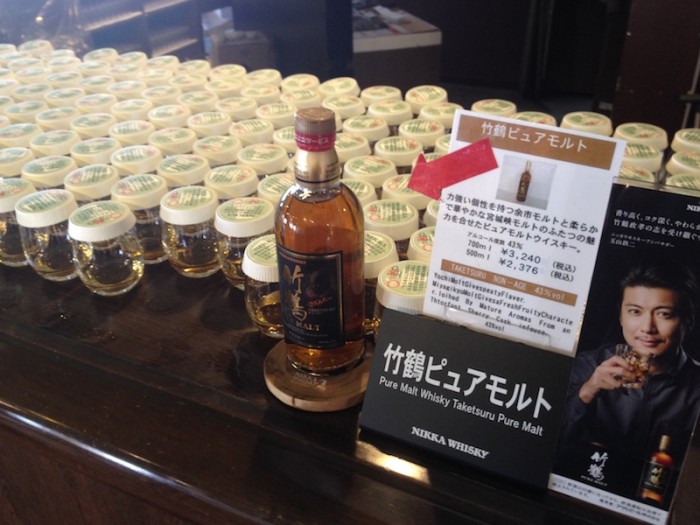
While mentioning the party scene, if you make it to Japan with a group, you really should experience karaoke. It’s nothing like what happens in the U.S. Arriving at a Japanese karaoke felt like walking into a movie theater, with a front reception area followed by hallways and small rooms off to each side. Karaoke rooms are private for groups, and our crew of a dozen people belted out songs for hours.

Some weird videos (including strange and subtly racy videos of Japanese women) played behind the singer; while everyone imbibed all-you-can-drink beer. It was quite an experience, and one I’d highly recommend.
14. Do More Than Ski
I didn’t have the opportunity to do this, but the next time I return to ski in Japan, I will definitely add a week of sightseeing to the agenda. While the ski resorts are amazing, the food is spectacular, and the Japanese are welcoming and kind, the ski areas of Hokkaido felt like, well, ski areas. After hopping on a 12-hour flight, it would make sense to spend a few nights in Tokyo or even Sapporo (where you’ll arrive to ski Hokkaido) to get a better feeling for modern life in Japan. From a brief glimpse, it looks mind-bogglingly foreign, and pretty awesome.

Ultimately, a week in Japan wasn’t enough. I will be back, and plan to see more of the country on my return. But the call of that deep powder will assure I touch down in Hokkaido for a few days for some of the best soft snow I’ve ever experienced.

